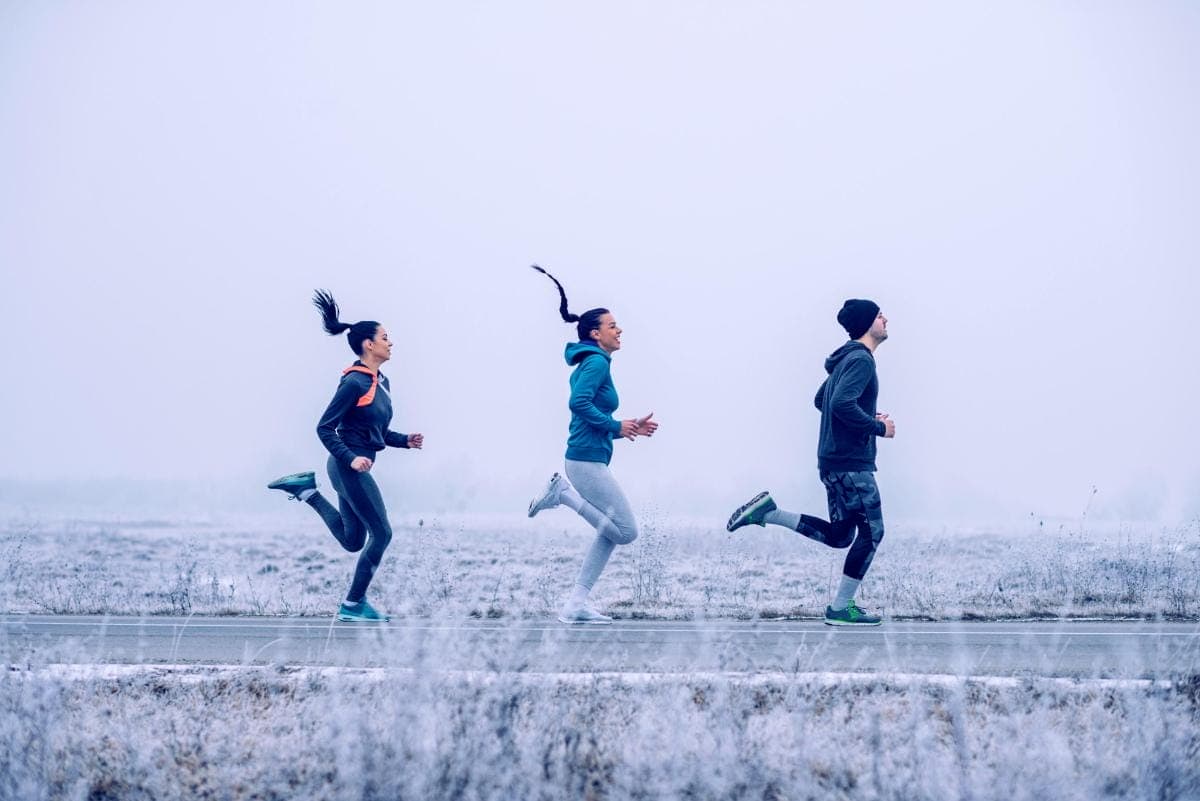Skincare, Trends & Opinions, Wellness
Thriving in the Chill: How to Exercise Safely and Effectively in Extreme Cold
If you click on links we provide, we may receive compensation.
Stepping outside in subzero temperatures can feel like a daunting task, especially when the allure of a warm blanket and a cozy couch beckons. But what if I told you that exercising in the cold not only boosts your endurance but can also supercharge your metabolism? Yes, embracing the frosty air has its perks—if done safely and effectively.
According to the American Heart Association, cold-weather workouts can improve your cardiovascular health and calorie burn, as your body works harder to stay warm. But let’s not sugarcoat it: working out in the cold comes with its challenges. Frostbite, hypothermia, and icy sidewalks are real concerns, but they can be mitigated with the right strategies.
Let’s explore how to embrace the chill while keeping safe, healthy, and motivated.
The Science of Cold Weather on Your Body
When you exercise in the cold, your body faces two battles: generating enough heat to maintain your core temperature and performing the physical activity itself. Your heart pumps faster, your lungs work harder, and your muscles stiffen as they lose heat more quickly. Surprisingly, this extra effort can lead to an increase in calorie burn.
A study published in Frontiers in Physiology found that exposure to cold increases brown fat activation, a tissue that helps burn calories to generate heat. This metabolic boost can be a hidden bonus of winter workouts! However, it’s essential to prepare your body to ensure that these benefits outweigh the risks.
Dressing for Success in Subzero Temperatures
Your outfit is your first line of defense against the elements. While it’s tempting to bundle up like an arctic explorer, overdressing can lead to sweating, which becomes a problem as sweat cools and increases the risk of hypothermia.
Opt for layers. Start with a moisture-wicking base layer to keep sweat off your skin. Follow up with an insulating middle layer—think fleece or wool—to trap heat. Finish with a waterproof, wind-resistant outer layer to shield you from snow and icy winds.
Don’t forget extremities! Heat escapes rapidly from your head, hands, and feet. Wear a thermal hat, insulated gloves, and wool socks to keep these vulnerable areas warm.
The Importance of a Warm-Up (Yes, Even More So in Winter)
Warming up is always essential, but in cold weather, it’s non-negotiable. Cold muscles are more prone to injury, so dedicate at least 10–15 minutes to dynamic stretches and light aerobic movements before heading out. This not only raises your core temperature but also preps your muscles for the extra strain of cold-weather exercise.
Try high knees, lunges, or arm circles indoors before braving the cold. You’ll notice a significant difference in how quickly your body adapts once you start your outdoor workout.
Staying Safe: Avoiding Frostbite and Hypothermia
The two most significant risks of exercising in extreme cold are frostbite and hypothermia. Frostbite occurs when skin and underlying tissues freeze, most commonly affecting fingers, toes, ears, and nose. Look for early signs like redness, numbness, or a prickling sensation.
Hypothermia, on the other hand, sets in when your body loses heat faster than it can produce it, leading to dangerously low body temperatures. Shivering, confusion, and slurred speech are key warning signs.
To stay safe:
- Keep an eye on the wind chill factor, which can make temperatures feel much colder.
- Avoid wet conditions. Wet clothing accelerates heat loss.
- Take frequent breaks to monitor your body for any signs of cold-related injuries.
Adapting Your Workout to Cold Conditions
Adjust your routine based on the weather. If icy roads or sidewalks make running treacherous, opt for activities like cross-country skiing, snowshoeing, or winter hiking. These not only offer a fantastic cardio workout but also engage muscles differently than warm-weather activities.
Shorten your sessions if needed. Extreme cold can limit your endurance, so start with shorter durations and gradually increase as your body acclimates. Remember, it’s better to do a shorter, safer workout than to risk injury or overexposure.

Fueling and Hydration in the Cold
It’s easy to forget about hydration when you’re not sweating buckets, but cold air is dehydrating. Make a conscious effort to drink water before, during, and after your workout. Warm beverages like herbal tea can be a comforting way to rehydrate post-exercise.
As for nutrition, focus on complex carbs and healthy fats to fuel your body for the extra energy demands of cold-weather exercise. Snack on nuts, whole grains, or a banana with peanut butter before heading out.
The Psychological Boost of Exercising in the Cold
Let’s face it—winter can be tough on mental health. Shorter days and colder temperatures often lead to the dreaded “winter blues.” However, exercising outdoors can counteract this. Sunlight exposure boosts vitamin D levels and improves your mood, while the endorphins from physical activity act as a natural antidepressant.
So, the next time you’re tempted to skip your workout, think of the mental health benefits. A brisk walk or a quick jog in the snow might be just what you need to reset your mind.
Listening to Your Body
Your body is your best guide. If you start feeling excessively cold, tired, or notice unusual symptoms like tingling in your extremities, it’s time to stop. Pushing through discomfort in extreme cold can lead to serious health risks.
Invest in a good quality activity tracker that monitors your heart rate and other vital signs. These devices can provide an added layer of safety by alerting you to any irregularities.
Celebrating the Benefits of Winter Workouts
Despite the challenges, there’s something uniquely rewarding about exercising in extreme cold. The crisp air, the peacefulness of snowy landscapes, and the sense of accomplishment all add to the experience. With the right preparation and mindset, you might even find yourself looking forward to your next frosty adventure.




